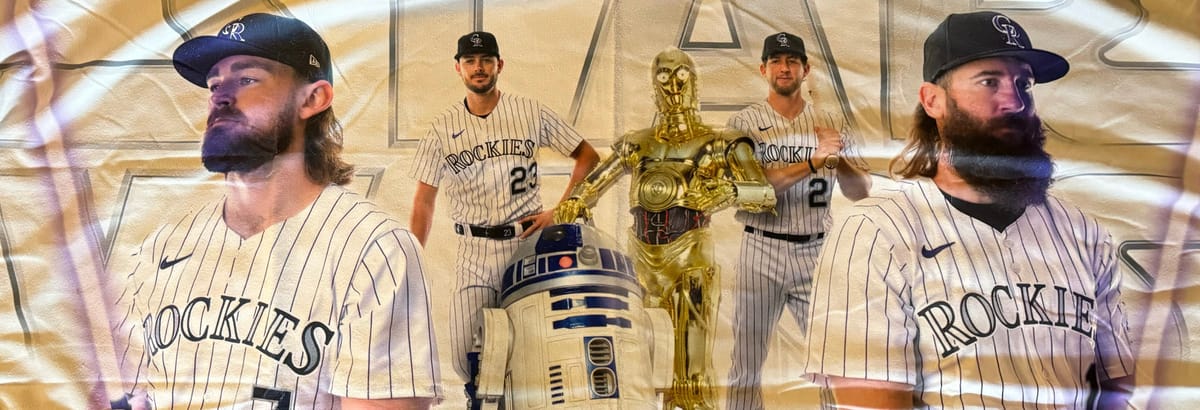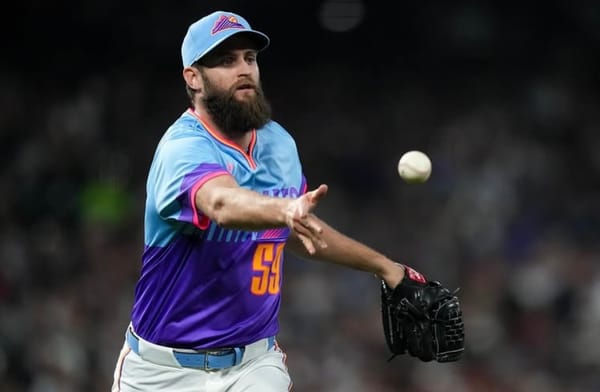What Is the Colorado Rockies Plan for 2025?
Thanks to decisions revealed at the trade deadline, we have some ideas.

Last week, the 2024 Trade Deadline came and went with the Colorado Rockies making only two modest moves: They traded Nick Mears to the Milwaukee Brewers and Jalen Beeks to the Pittsburgh Pirates.
When 4:00 had passed and Mark Feinstein made clear that the Rockies had, indeed, finished for the day, a bewildered fandom wondered what had happened. Why was Cal Quantrill still a Rockie? Why were Jacob Stallings, Elias Díaz, and Austin Gomber? After all, the rumors had been clear those players would be shopped, which made sense for a rebuilding team long out of 2024 contention.
The decision not to trade Ryan McMahon, a player other teams had interest in, seemed curious as well. What were the Rockies doing?
Some of that became clearer on Wednesday in Thomas Harding’s outstanding Rockies newsletter.
Let’s start with a few quotes from Harding’s article and then tease things out.
First, the quotes:
• “They believe there is a route to contending in 2025, even if evidence of going on six straight sub-.500 seasons contradicts.”
• “The Rockies weren’t going to lower their trade requests. If it were a fire sale, it would be at full price.”
• “But with refusal to jettison everyone comes quick-turnaround responsibility. It starts with the crew on hand playing better.”
• “The Rockies still like having righty pitcher Cal Quantrill around” and “The last time the Rockies had this much pitching depth, 2017 and 2018, they went to the postseason.” He also noted that Bud Black believes a team needs eight MLB-ready pitchers to contend.
• “Just welcoming the core back won’t do, though. General manager Bill Schmidt and owner Dick Monfort must make the right offseason moves, with fixing the bullpen being the top task.”
There’s a lot here to unpack, so let’s sort through it.
The Rockies Believe in Their Core
Let’s start with position players and then move to pitching because, as I read it, the Rockies think if their current roster plays better, they can contend. Given that Harding mentioned the 2018 team, a comparison seems in order.
Before going further, I realize this is an unequal comparison given that all the data is in for the 2018 Rockies while there are still just under two months remaining for the 2024 crew. That means their numbers should improve before the end of the season.
In addition, I’m comparing a team that proved playoff ready with one that does not see itself contending until the following season. In short, this is more a sketch than a detailed drawing.
Now to the details.
Here is the 2018 roster with the data courtesy of FanGraphs:

This is a solid lineup led by Nolan Arenado and Trevor Story. It’s important to note that Arenado was a 5.9 fWAR player while Story was 4.7 and Blackmon 2.5. In other words, they had two serious hitters leading the way with a solid supporting cast that resulted in 14.7 fWAR.
Compare that with the 2024 Rockies:

While there’s no doubt that Ezequiel Tovar and Brenton Doyle are much improved from 2023, at this point, neither player compares with the production of 2018 Arenado and Story — and the difference is significant. Blackmon is barely above replacement level. The entire team has earned 3.1 fWAR — that’s less that Trevor Story’s 2018 production — and it seems unlikely they’ll add 11 fWAR in the coming weeks.
To be competitive, this roster will need to show more growth than we’ve seen thus far.
Plus, Bud Black continues to rely too heavily on veterans at the expense of younger players’ on-field time. For example, Jake Cave has 236 plate appearances compared to Hunter Goodman’s 151. This is not a forward-looking strategy.
Presumably, the Rockies assume Nolan Jones will return to his 2023 form (3.6 fWAR), not his current -0.6 fWAR. That would be great, but there’s no guarantee that will happenl, and it’s still short of Arenado’s and Story’s production. Kris Bryant, meanwhile, has yet to show himself as a consistent part of the roster.
In other words, the current position player roster will need to make substantial improvements if the Rockies intend to compete in 2025.
Consider, then, the starting rotations.
Here’s the 2018 roster, again from FanGraphs:

That’s a 13.8 fWAR rotation, led by Germán Márquez and a Cy-Young-finalist Kyle Freeland. After that, the production drops off, but this was still a solid rotation.
Now to 2024:

The entire rotation has a 4.0 fWAR led by Ryan Feltner’s 1.5 fWAR. Similarly, Kyle Freeland has struggled to come back from a disastrous April though he has since improved. Still, as we’ve seen this season, this is not a good rotation.
The Rockies are surely arguing that next year, they will be ready. They will bring back a healthy Márquez and Senzatela; Freeland, Quantrill, Gomber, and Feltner will return; Tanner Gordon and Anthony Molina are promising; and there is talent on the farm (e.g., Carson Palmquist).
But a lot of pieces have to fall into place for that to happen — including a strong return from Tommy John surgery for Márquez and Senzatela, which is not always the case. We’ve already seen Márquez struggle this season. If the Rockies intend to contend next year, there will be little margin for error.
The Rockies Are Still Believers in “Guys Playing Better”
This has been an old theme in the organization: The talent is there if the players would simply play better.
Here’s Harding in the article “Rockies GM discusses Trade Deadline and future goals”: “Schmidt is calling on the current players – some of whom Schmidt talked to other teams about but either didn’t receive or like the offers – to become healthier and better.”
Here are some of the specific recommendations:
• Brendan Rodgers is “capable of more” (as are the starting pitchers).
• Tovar, Doyle, Vodnik, and Toglia “must keep moving forward.”
• Jones, Byrd, and Lawrence “must regain momentum.”
• Bryant will need to avoid injuries.
That is a lot of magical thinking — there’s just no other word for it. Yes, Tovar, Doyle, and Toglia have been solid this season. However, it’s not like their teammates aren’t working their hardest and doing their best. And it seems unlikely that any player is hoping to be injured. The extent to which a player controls his health seems negligible.
Missing for Schmidt’s assessment is any indication of changing the coaching or analytics side of the organization. Instead, the players will need to play better, and the Rockies will add to the bullpen.
Looking at the numbers, it’s difficult to make a case for the Colorado Rockies contending in 2025.
Accolades
Big shoutout to Brenton Doyle for a much-deserved NL Player of the Month Award.
YOUR NL PLAYER OF THE MONTH, @brentondoyle7!!! pic.twitter.com/aHqcPZiCiM
— Colorado Rockies (@Rockies) August 3, 2024
Read more here.
What I’m Reading
• This is a pretty terrific analysis of Ezequiel Tovar and his swing changes.
Happy 23rd birthday, Ezequiel Tovar!@markdero7 and Dan O'Dowd dive in on the @Rockies youngster and his incredibly high upside. #MLBCentral pic.twitter.com/8bgTFrXtqx
— MLB Network (@MLBNetwork) August 1, 2024
• Patrick Saunders’ “Even as Rockies’ Offensive Production Grows, Sky-high Strikeouts Persist: ‘It’s got to get better’” (Denver Post) — This is an insightful look into the Rockies K problems.
• Skyler Timmins’ “The Rockies Mishandled the 2024 Trade Deadline” (Purple Row) — Timmins details some problems with the Rockies approach to the deadline.
Closing Thoughts
And that’s it for this week.
As you’ve probably figured out, this summer has been unusual, and that’s going to worsen through August. (I’ve got some family commitments, and my classes are starting.)
So Rockies Pitch will be on hiatus through Labor Day. By then, everything should be settled, and we can start watching for September call-ups as well as offseason moves.
As always, thanks for reading —
Renee
★ ★ ★
Rockies Pitch is a newsletter that focuses on Colorado Rockies baseball and tries to tell the stories no one else is.




